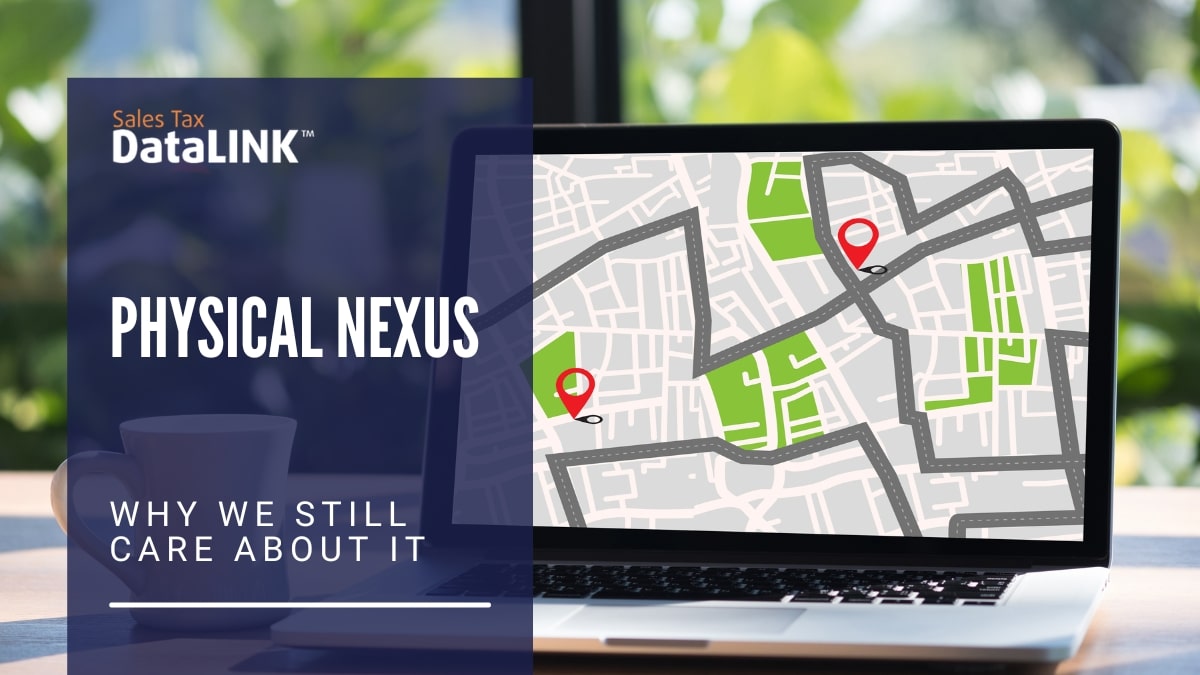While the Wayfair decision established economic nexus as a basis for sales tax collection across state lines, the traditional standard of physical nexus retains significance for companies navigating complex multi-jurisdictional compliance. With various gray areas remaining around how and when different nexus standards apply, properly identifying all instances of physical nexus remains an essential first step for any business in fulfilling its sales tax obligations. This is because having a tangible in-state presence through properties, employees, or regular business activities can independently trigger tax duties, regardless of economic measures. This blog post aims to bring renewed focus to the ongoing relevance of physical nexus and help inform readers on navigating both nexus standards effectively.
The new nexus
Before the Supreme Court’s decision in South Dakota vs. Wayfair, remote sellers only had to collect sales tax when they had a physical presence in a jurisdiction. A store, a warehouse full of your products, affiliate sellers — these things showed that you had a real presence in a state and gave you nexus in that state. That’s physical nexus.
In 2018, the Supreme Court decided that other kinds of behavior could establish nexus. “Cookie nexus” was used to describe online connections with consumers. “Virtual nexus” was another term used. Most states have since then settled into “economic nexus” — a company that makes money in a state should pay that state sales tax. Economic nexus is now just as real as physical nexus.
Many states have set an economic threshold, saying that any company with 200 transactions in their state in a year, or $100,000, is benefitting from their economic nexus with the state.
Physical nexus still matters
So does this mean that you can ignore the question of physical nexus? It does not. If you are located in Arkansas and have sales of $100,000 in Nevada, you must collect sales tax from customers in Nevada. You must register for sales tax and file and remit the taxes you collect.
Say you have only $90,000 in sales in Oklahoma…but you have a shop there, right over the state line. Or a delivery service that crosses the state line into Oklahoma for your customers in the Sooner State.
In that case, you have physical nexus, and must be sales tax complaint, no matter how much or how little you sell in that state.
How can you tell?
We’ve made it simple by looking at three states with the $100,000 or 200 transactions threshold. In fact, not all states use that definition. Connecticut requires sales tax compliance when companies have $100,000 and 200 transactions. California’s threshold is $500,000, with no number of transactions specified. New York has a threshold of $500,000 and more than 100 sales (that is, 101 or more transactions).
There is no logical way to deduce what the rules for any state may be. Add county and municipal taxes, even in states which have no state sales tax, and you can see that there are a lot of different possibilities.
Sales Tax DqataLINK can help. Our patented software is robust and accessible, with predictable pricing and a surprisingly easy installation process.
Outsource to us
Maybe an easy process is still too much. Small and medium-sized businesses may not have anyone with the time and training to take care of the monster-sized job sales tax compliance has become. Our sales tax experts can take it off your shoulders and leave you free for mission-critical tasks.
Call us at 479-715-4275 and let us help make your sales tax compliance easier.




